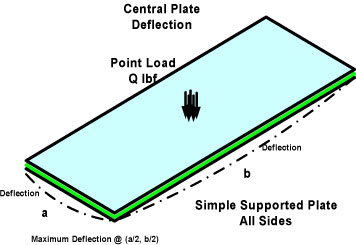Handbook of Polymer Composites for Engineers A volume in Woodhead Publishing Series in Composites Science and Engineering. Edited by: LEONARD HOLLAWAY. Browse book content. About the book. Search in this book. Search in this book. Browse content Table of contents. Select all Front Matter. DEPARTMENT OF DEFENSE HANDBOOK COMPOSITE MATERIALS HANDBOOK VOLUME 3. POLYMER MATRIX COMPOSITES MATERIALS USAGE, DESIGN, AND ANALYSIS. This Composite Materials Handbook Series, MIL-HDBK-17, are approved for use by all Departments and Agencies of the Department of Defense. DEPARTMENT OF DEFENSE HANDBOOK COMPOSITE MATERIALS HANDBOOK VOLUME 1. POLYMER MATRIX COMPOSITES GUIDELINES FOR CHARACTERIZATION. This Composite Materials Handbook Series, MIL-HDBK-17, are approved for use by all Departments and Agencies of the Department of Defense. This handbook is for guidance only. Woodhead Publishing Series in Composites Science and Engineering [Updated at 2016.09.16] 7 torrent download locations zooqle.com Woodhead Publishing Series in Composites Science and Engineering book 1 day monova.org Woodhead Publishing Series in Composites Science and Engineering Books 1 day idope.se Woodhead Publishing Series in Composites Science and Engineering [Updated at 2016.09.16] books. The Handbook of Engineering and Specialty Thermoplastics Practical Guide to Polyethylene. Block and graft polymers and composites, and reviews the types of additives used in polyethylene.Polyethylenes offer a wide range of properties due to differences in structure and molecular weight, and the Practical Guide gives the low down on the.

Summary
Fiber-reinforced polymer (FRP) composites have become an integral part of the construction industry because of their versatility, enhanced durability and resistance to fatigue and corrosion, high strength-to-weight ratio, accelerated construction, and lower maintenance and life-cycle costs. Advanced FRP composite materials are also emerging for a wide range of civil infrastructure applications. These include everything from bridge decks, bridge strengthening and repairs, and seismic retrofit to marine waterfront structures and sustainable, energy-efficient housing. The International Handbook of FRP Composites in Civil Engineering brings together a wealth of information on advances in materials, techniques, practices, nondestructive testing, and structural health monitoring of FRP composites, specifically for civil infrastructure.

With a focus on professional applications, the handbook supplies design guidelines and standards of practice from around the world. It also includes helpful design formulas, tables, and charts to provide immediate answers to common questions. Organized into seven parts, the handbook covers:
Advanced Composite Engineering
- FRP fundamentals, including history, codes and standards, manufacturing, materials, mechanics, and life-cycle costs
- Bridge deck applications and the critical topic of connection design for FRP structural members
- External reinforcement for rehabilitation, including the strengthening of reinforced concrete, masonry, wood, and metallic structures
- FRP composites for the reinforcement of concrete structures, including material characteristics, design procedures, and quality assurance–quality control (QA/QC) issues
- Hybrid FRP composite systems, with an emphasis on design, construction, QA/QC, and repair
- Quality control, quality assurance, and evaluation using nondestructive testing, and in-service monitoring using structural health monitoring of FRP composites, including smart composites that can actively sense and respond to the environment and internal states
- FRP-related books, journals, conference proceedings, organizations, and research sources
Online Engineering Handbook
Comprehensive yet concise, this is an invaluable reference for practicing engineers and construction professionals, as well as researchers and students. It offers ready-to-use information on how FRP composites can be more effectively utilized in new construction, repair and reconstruction, and architectural engineering.
Nab Engineering Handbook Torrent
Table of Contents
GLOBAL TRENDS FOR POLYPROPYLENEM.J. Balow
POLYPROPYLENE: STRUCTURE, PROPERTIES, MANUFACTURING PROCESSES, AND APPLICATIONS
W.J. Kissel, J.H. Han, and J.A. Meyer
CHEMICAL COUPLING AGENTS FOR FILLED AND GR-PP COMPOSITES
D. Roberts and R.C. Constable
STABILIZATION OF FLAME-RETARDED POLYPROPYLENE
R.E. Lee, D. Hallenbeck, and J. Likens
RECYCLING OF POLYPROPYLENE AND ITS BLENDS: ECONOMIC AND TECHNOLOGY ASPECTS
A.A. Adewole and M.D. Wolkowicz
IMPACT BEHAVIOR OF POLYPROPYLENE, ITS BLENDS AND COMPOSITES
J. Jancar
METALLOCENE PLASTOMERS AS POLYPROPYLENE IMPACT MODIFIERS
T.C. Yu and Donald K.
TALC IN POLYPROPYLENE
R.J. Clark and W.P. Steen
GLASS FIBER-REINFORCED POLYPROPYLENE
P.F. Chu
FUNCTIONALIZATION AND COMPOUNDING OF POLYPROPYLENE USING TWIN-SCREW EXTRUDERS
T.F. Bash and H.G. Karian
ENGINEERED INTERPHASES IN POLYPROPYLENE COMPOSITES
J. Jancar
MEGA-COUPLED POLYPROPYLENE COMPOSITES OF GLASS FIBERS
H.G. Karian
CHARACTERIZATION OF LONG-TERM CREEP-FATIGUE BEHAVIOR FOR GLASS FIBER-REINFORCED POLYPROPYLENE
L.E. Campbell
MICA REINFORCEMENT OF POLYPROPYLENE
L.A. Canova
USE OF COUPLED MICA SYSTEMS TO ENHANCE PROPERTIES OF POLYPROPYLENE COMPOSITES
J. Antonacci
PERFORMANCE OF LAMELLAR HIGH PURITY SUBMICRON AND COMPACTED TALC PRODUCTS IN POLYPROPYLENE COMPOUNDS
W. Schober and G. Canalini
AUTOMOTIVE APPLICATIONS FOR POLYPROPYLENE AND POLYPROPYLENE COMPOSITES
B. Flowers
WOLLASTONITE REINFORCED POLYPROPYLENE
R. Beck, D. Columbo, and G. Phillips
PART SHRINKAGE BEHAVIOR OF POLYPROPYLENE RESINS AND POLYPROPYLENE COMPOSITES
H>G. Karian
POLYPROPYLENE NANCOMPOSITE
G. Qian and T. Lan
Comments are closed.